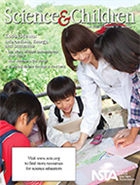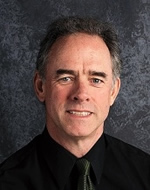By Peggy Ashbrook
Posted on 2014-03-06
 Since it is now March and in my area we just had our 10th snow day, I am dreaming of planting seeds rather than actually planting them. What should the children plant in the raised bed school garden, a tiny sliver of ground that could not be incorporated into the play area because there is a telephone pole in the way? The children offer very general ideas: “flowers,” “carrots,” and “peas” (from the older children who remember them from last spring). These are great ideas and we can do them all—first peas, and later carrots and flowers, all in small amounts. There are wonderful children’s fiction and non-fiction books and songs about gardening with children. Post your favorites in the comments below.
Since it is now March and in my area we just had our 10th snow day, I am dreaming of planting seeds rather than actually planting them. What should the children plant in the raised bed school garden, a tiny sliver of ground that could not be incorporated into the play area because there is a telephone pole in the way? The children offer very general ideas: “flowers,” “carrots,” and “peas” (from the older children who remember them from last spring). These are great ideas and we can do them all—first peas, and later carrots and flowers, all in small amounts. There are wonderful children’s fiction and non-fiction books and songs about gardening with children. Post your favorites in the comments below.
Like many schools, we don’t have a windowsill with full sun where we can grow healthy seedlings inside. We do sprout seeds in plastic bags, clear containers and on sponges, to see the delicate roots and sprouts grow. But growing a plant to maturity must wait until we can plant in the ground, currently under a blanket of snow.

I’m also interested in having plants that will attract butterflies because they are so pretty and the children are attracted by their colors and motion. Children do like to find ants, roly-polies, slugs and earthworm, and spot bees, too. These observations add up over time to a beginning understanding of the ecosystem, and how the small animals fit into it. The ants are often found in groups, worms are always found in or on the ground, the roly-polies and slugs are most abundant in damp places, and the bees are focused on flowers. This concept, of each animal meeting its needs within an ecosystem, is more apparent in butterflies because their needs change with change in life stage after they come from the egg as larva, change to pupa, and then to adult.
 In the March 2014 Early Years column in Science and Children, I wrote about observing the growth of a fennel plant (Foeniculum vulgare) and the animals that use it, over time. In the school yard, we have a fennel plant whose leaves are food for the larvae (caterpillars) of Black Swallowtail butterflies. The adult butterfly does drink nectar from the flowers but seems to prefer the nectar of annual flowering plants. By planting another favorite Black Swallowtail larval food, parsley, nearby, we can almost guarantee that we will be able to find these caterpillars. These caterpillars are safe to touch—gently, for the caterpillar’s sake. Research the species of butterflies that live in your area to learn which are safe for children to touch and which have stinging hairs. Some species should not be disturbed because they are an endangered species. The common and not-endangered butterfly species in your region may not be the same species as the ones I have my children observe as the spring season progresses.
In the March 2014 Early Years column in Science and Children, I wrote about observing the growth of a fennel plant (Foeniculum vulgare) and the animals that use it, over time. In the school yard, we have a fennel plant whose leaves are food for the larvae (caterpillars) of Black Swallowtail butterflies. The adult butterfly does drink nectar from the flowers but seems to prefer the nectar of annual flowering plants. By planting another favorite Black Swallowtail larval food, parsley, nearby, we can almost guarantee that we will be able to find these caterpillars. These caterpillars are safe to touch—gently, for the caterpillar’s sake. Research the species of butterflies that live in your area to learn which are safe for children to touch and which have stinging hairs. Some species should not be disturbed because they are an endangered species. The common and not-endangered butterfly species in your region may not be the same species as the ones I have my children observe as the spring season progresses.
 Resources that might be of use include online catalogues maintained by volunteers, online and in print information sheets from government agricultural services, and identification books such as the Peterson First Guide to Caterpillars of North America by Amy Wright. I like this book because it describes 120 common species and shows the caterpillars, their adult forms and many of their host plants.
Resources that might be of use include online catalogues maintained by volunteers, online and in print information sheets from government agricultural services, and identification books such as the Peterson First Guide to Caterpillars of North America by Amy Wright. I like this book because it describes 120 common species and shows the caterpillars, their adult forms and many of their host plants.
Did you know that digital versions of NSTA journals are available for members to read on your computer as well as your Kindle Fire, Android tablet/phone, or iPad/iPhone?



 In an NSTA discussion forum, a question was raised about studying ecosystems and food chains at the elementary level. I pointed the readers to articles in this month’s edition of Science & Children, which has a variety of classroom resources and background information for teachers.
In an NSTA discussion forum, a question was raised about studying ecosystems and food chains at the elementary level. I pointed the readers to articles in this month’s edition of Science & Children, which has a variety of classroom resources and background information for teachers.



 As Director of Distance Learning for University of Minnesota’s Bell Museum of Natural history, each year Chris Tower created and provided professional development for more than 300 teachers throughout Minnesota and Wisconsin via two distance–learning, cross-curricular science programs: the JASON Project and BellLive.
As Director of Distance Learning for University of Minnesota’s Bell Museum of Natural history, each year Chris Tower created and provided professional development for more than 300 teachers throughout Minnesota and Wisconsin via two distance–learning, cross-curricular science programs: the JASON Project and BellLive. At the end of a unit, there are always students who haven’t completed some assignments. Coming in before or after school is not an option for most of my students. Rather than moving on to the next unit, knowing they’ll fall even further behind, I’d like to provide some class time for this make-up work. But I need some ideas for the other students who are caught up with their work.
At the end of a unit, there are always students who haven’t completed some assignments. Coming in before or after school is not an option for most of my students. Rather than moving on to the next unit, knowing they’ll fall even further behind, I’d like to provide some class time for this make-up work. But I need some ideas for the other students who are caught up with their work. 



 As part of a science methods class, we’ve been assigned to create an observation tool to assess students. I’ve seen many articles and suggestions online for helping students become good observers and tools for administrators to use when observing teachers. But I haven’t seen much on teachers observing students. What can I assess by watching students?
As part of a science methods class, we’ve been assigned to create an observation tool to assess students. I’ve seen many articles and suggestions online for helping students become good observers and tools for administrators to use when observing teachers. But I haven’t seen much on teachers observing students. What can I assess by watching students? 


